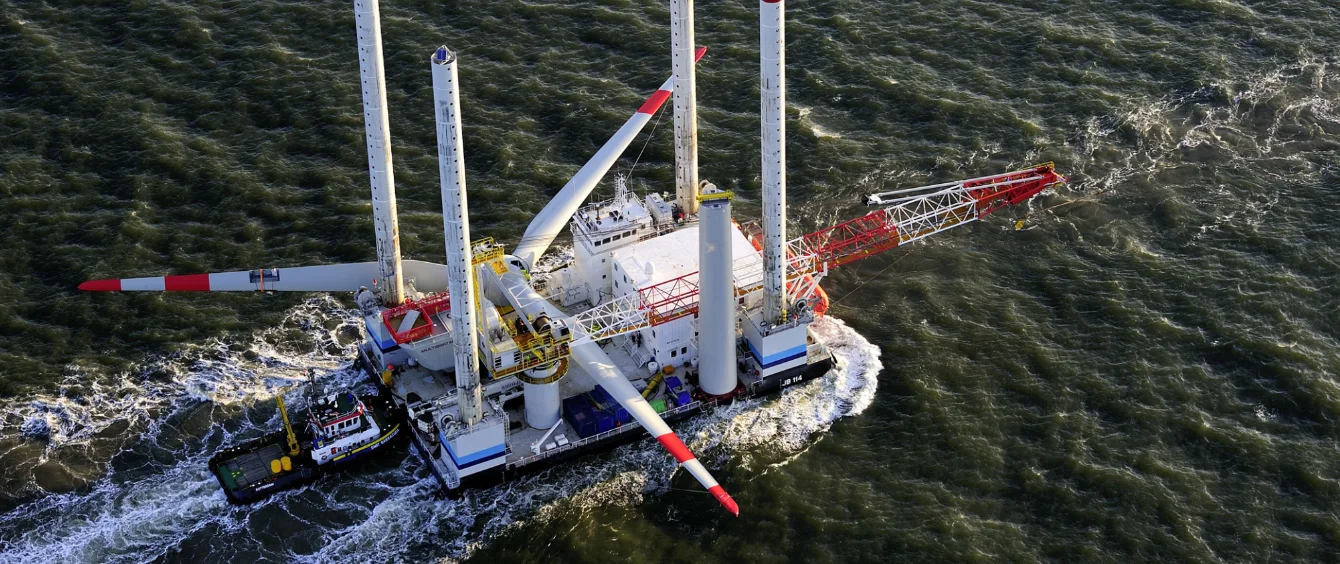25 times more offshore wind capacity by the middle of the century: this is the ambitious target set by the European Commission (EC) in support of achieving European climate neutrality by 2050. Inthe long expected, recently published , Offshore Renewable Energy Strategy, the EC has set out how this goal can be achieved.
At its heart is an increased level of cooperation between Member States, is a desire to create a European legal framework that supports the whole industry, a strengthening of the supply chain and, of course, a lot of money. The Commission estimates that almost €800 billion will be needed to invest in the large-scale deployment of the necessary cables and generation, including some new technologies.
Renewable offshore energy is already a “real European success story”, says Frans Timmermans, the Vice-President of the EC who is responsible for the strategy, and explains that thanks to its vast sea basins and the leading position of its industry, the EU has all the prerequisites to tackle this challenge.
Declared goal: 60 gigawatts by 2030, 300 gigawatts by 2050
The strategy, prepared jointly with Kadri Simson, EU Commissioner for Energy, and Virginijus Sinkevičius, EU Commissioner for Environment, Oceans and Fisheries, details a capacity increase from around 12 gigawatts at present to at least 60 gigawatts by 2030. Furthermore, it outlines that by 2050 Europe’s offshore wind capacity should be increased to 300 gigawatts . In parallel, a further 40 gigawatts of generation capacity is to be built from other technologies such as floating solar power plants and wave and tidal. These are also enormous growth targets, as floating wind turbines currently only produce around 40 megawatts and ocean energy technology, such as wave and tidal power plants, produce around 13 megawatts.
The Commission intends to develop a predictable and long-term regulatory framework to ensure that sufficient investment is made. For example, the guidelines against which the Commission will assess national support regimes under EU state aid rules will be adapted. The electricity market rules have so far lacked clear guidance for cross-border projects. Of particular importance is the development of network infrastructure, which the Commission estimates will account for around two thirds of all costs. A network of sea cables is to be set up, initially on a regional basis and then on a European level, which should, like the interconnected grid on land, enable cost-effective use of the facilities and secure supply.
EU programs are supposed to kick-start projects
This huge investment will have to be financed primarily by the private sector, but targeted grants from the EU budget will help to kick-start projects. From the point of view of the offshore industry, bilateral contracts for difference (“CFD”) are the internationally proven means of choice, combining investment security and low costs for consumers. Improvements would also be desirable through greater harmonisation of the very different national support regimes for offshore wind.
Alongside the special economic stimulus package currently being developed in response to the Corona crisis, many other EU funding programmes will also be used for this purpose, such as “InvestEU”, the “Connecting Europe” programme specifically designed for network infrastructure, the EU Innovation Fund, the Modernisation Fund of the emissions trading scheme and the new EU research framework programme “Horizon Europe” starting in 2021.
Media: Highest offshore potential in the North Sea and Atlantic Ocean
European media such as Reuters and the Handelsblatt (in German) have reported in detail on the ambitious expansion plans. While the international news agency describes the planned expansion as “mammoth project”, the German daily newspaper presents the European potential for the expansion of offshore wind energy in an overview graphic. According to figures from “WindEurope”, the Netherlands are the front-runner with a potential of around 60 GW of offshore capacity, while Estonia finishes last with just 1 GW. The total potential for the expansion of offshore wind energy in the North and Baltic Seas and in the Atlantic Ocean is estimated at 380 GW in total, and around 70 GW in southern European waters.
Photo credit: © RWE AG
